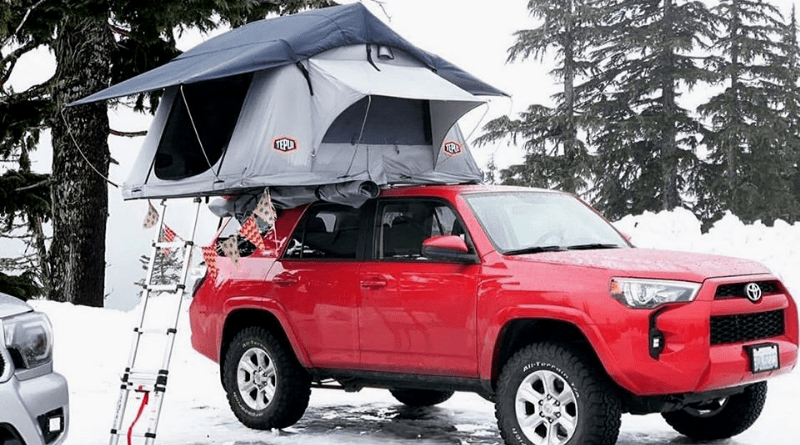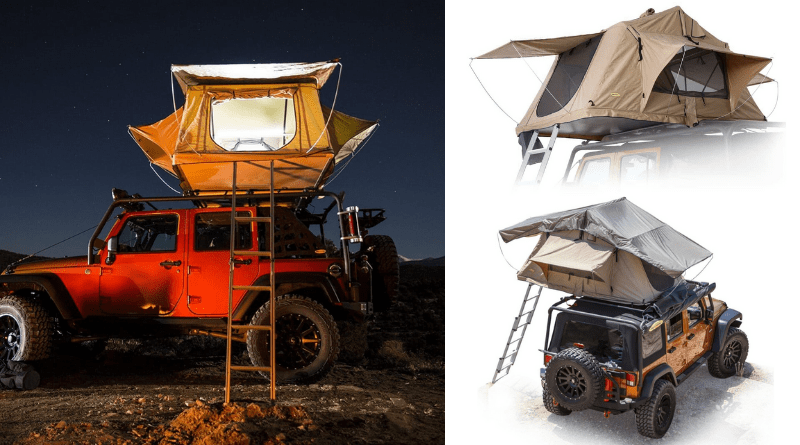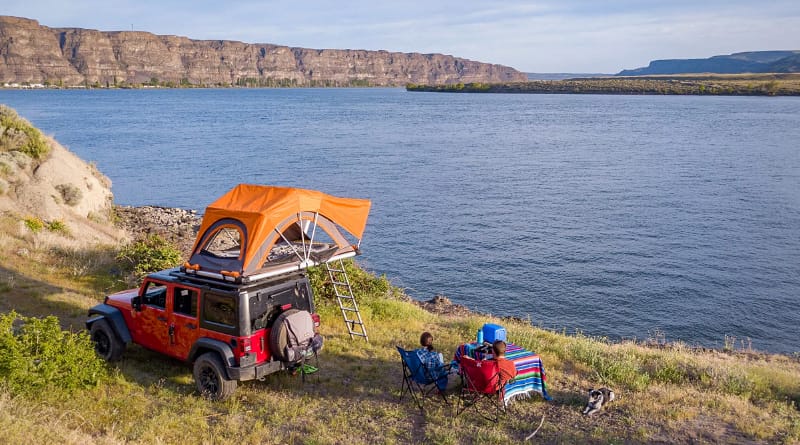
What to Consider When Shopping for a Rooftop Tent
Sleep is important. Truth be told, I’ve never been a competent sleeper, not even in my own bed. So when I find myself out and about every couple months, whittling down the list of States I haven’t been to—well, a good night’s sleep proves even more rare. Of course, this may have to do with my aversion to spending money on proper lodging.
I’ve slept in rental Nissans and Hyundais in Wal-Mart parking lots all over this great nation. I even once wedged myself in the trunk passthrough of a Passat on the Grand Canyon campground while the temperature dropped 40 degrees one May evening. (That hike down the Canyon the next day was brutal.)
But sleeping in (or rather above) one’s car, doesn’t have to be so painful.
Investing in a solid rooftop tent not only gets you closer to nature—while staying protected from weather and curious wildlife—but also provides a comfortable sleeping environment to keep you refreshed for the next day’s adventure. But shopping for a rooftop tent may be a daunting task for even the most seasoned of enthusiasts. So let’s look as some things you should consider before making a purchase.
Mounting a Rooftop Tent
As we’ll discuss a little later, rooftop tents are heavy—many falling within the 100-200 lb. range. So you won’t be pitching these on top of the bare sheet metal of your roof or hood. If you’re installing the tent on an SUV or wagon, at the very least you’ll need side-rails running down the roof of your vehicle, and often having factory or aftermarket cross bars will make for an easier and more secure installation.
Keep in mind, if you’ve got any kind of racking system, basket, or rooftop accessory, you’ll probably need to remove them for a proper mount. And of course, ALWAYS make sure to research the maximum recommended weight—also listed as DWC (Dynamic Weight Capacity)—for whatever you’re mounting to. Consulting the owner’s manual, searching online, or giving the rail/bar manufacturer a call should provide you with the answer.
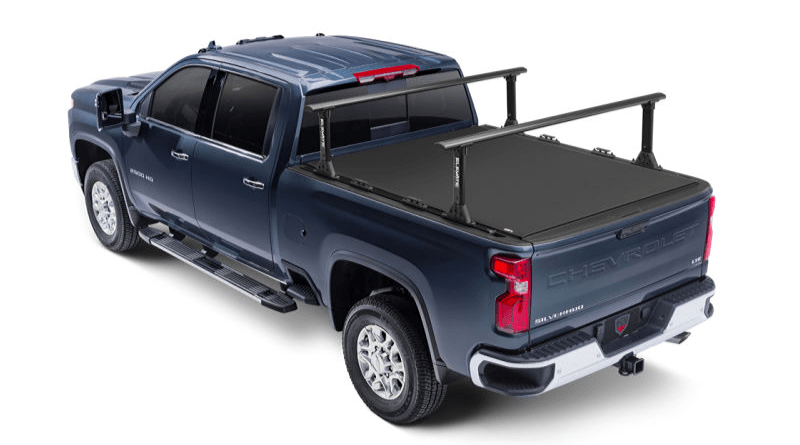
The new Elevate Rack System by Truck Hero offers a nice strong base for your rooftop tent while also allowing for full functionality of your truck bed cover. Photo: TruXedo
If you’ve got a pickup, mounting a rooftop tent usually means you’ll need one more accessory—bed bars. While SUVs and wagons often come from the factory with compatible side-rails, truck owners are left opening up their wallet one more time, unless they’re fortunate enough to have a bed cap with a rail system.
Bed bars come in sets of two, and usually run parallel with the bed of your truck—although other options can mount running across the bed. They act in the same fashion as side-rails/cross bars for an SUV. Depending on your needs, these bed bars can be had in different sizes to match your bed length and the height you want to mount your tent—just above your bed, the same height as your cab, or somewhere in-between.
Hard-shell vs. Soft-shell
After narrowing down the size, weight, and mounting options, the biggest decision you will need to make lies in the construction of the tent itself. While each rooftop option has its own unique look and style, they can usually be labeled with one of two classifications: hard-shell or soft-shell. You may also see them listed as “pop-up” and “fold-out,” but for this comparison, we’ll stick to the hard and soft-shell moniker.
Let’s take a look at some pros and cons of each.
Soft-shell
If you’re a camping traditionalist, or were a member of the scouts, then soft-shell tents probably look a little more familiar to you. Think of them as being in the same family tree as the typical Coleman or Ozark Trail tent you see at parks and campgrounds—just suspended off the ground.
In our eyes, the main benefit of choosing a soft-shell rooftop tent is the price. Look, let’s not mince words, automotive rooftop tents are expensive—whether hard or soft. So please don’t expect to pick one up at Wal-Mart tent-in-a-box prices. Anticipate paying somewhere around $800-1,200 for a solid, entry-level soft-shell rooftop tent, and that’s usually somewhere around 25%-50% of the cost of a hard-shell.
Worried your soft shell tent won’t stand up to cold temperatures? Consider adding a quilted insulator to help stay warm. Photo: Tepui Facebook
Aside from price, soft-shell tents generally have better accessibility to airflow, breathability, and visibility since they don’t have the hard exoskeleton built into their design. They also have better scalability to accommodate more people/more space per-person. A hard-shell is limited to the footprint of its outer encasement, while soft-shells can fold-out and become much larger than their packed-up travel size. Soft-shell tents also tend to weigh significantly less, so it may be a better option for a low rooftop payload vehicle.
But as you may be able to guess, there are some drawbacks to soft-shell tents. They’re not quite as sturdy and a bit more susceptible to wind and other elements. And during travel, they do kinda look like one of those insulated Domino’s pizza bags. But the main gripe is the dreaded set-up and tear-down process.
With a soft-shell, there’s still plenty of hooking, folding, propping, and anchoring that needs to be done, and then undone afterwards. So, if the thought of even having to properly fold back up a rest-stop pamphlet gives you anxiety, maybe the next category is for you.
Hard-shell
Easy, good-looking, and costs quite a bit. Yes, the characteristics of many Tinder first-dates also applies to hard-shell tents.
If you don’t mind spending a bit for looks and convenience, consider this rooftop variety. All closed-up they resemble a big, thick, suspended tonneau cover or platform rack. And while that may not sound like the belle of the ball, it certainly looks better than most soft-shells and quite often is sleeker and more aerodynamic, saving you an MPG or so in that regard. When it’s time to stop and pop, most hard-shell tents feature either a pop-up or clam-shell design, often with some assisting actuator—such as gas struts—to help it reach its final form.
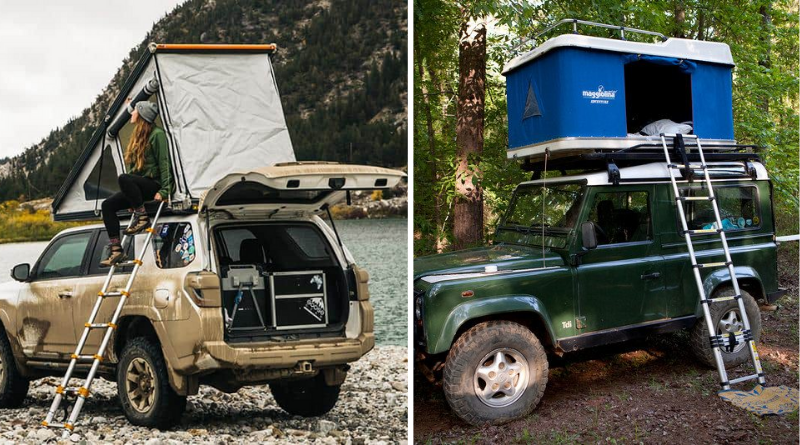
They’re generally a bit heavier, so initial installation make take a few more pairs of hands, but that very well may be the most difficult part of owning a hard-shell. Opening these units up is often a matter of just flipping up a couple locks and watching it take shape. Quite a few of these options come complete with a mattress, too, making it a true all-in-one solution. Because of the flat, hard, construction, many models come with track systems for mounting racks and lighting solutions as well.
But all that convenience and functionality does come at a price. You’re looking at a MSRP starting north of $2K for a reputable manufacturer, with $3-4K seeming to be the sweet spot for mid-higher end models. While there are exceptions, hard-shell tents generally tend to be 2-person as well. So, if you’re looking for more capacity, keep that in mind when filtering down your options.
Know What You’re Getting
As we’ve discussed, a rooftop tent is quite an investment. Buying a unit sight-unseen may leave you with regret years down the road; so don’t treat it like buying laundry detergent.
It should go without saying— but DO YOUR RESEARCH.
Talk to others, compare models, scour forums, and shop around. Treat it like you’re buying the car it’ll be mounted on. For example, if I had a Tacoma, I would want to see what tents other Tacoma and small truck owners are having luck with on their rig.
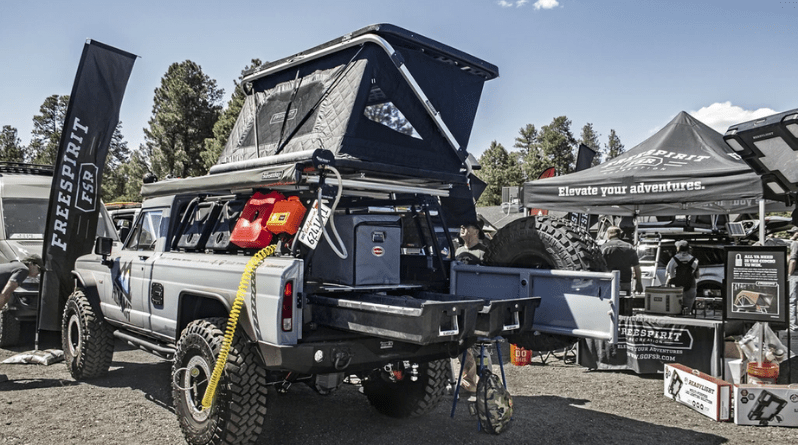
An off-road or overlanding expo is a great place to see adventure gear in action. This rig at the Freespirit Recreation booth at Overland Expo West showcases several products, including that cool pop-up rooftop tent. Photo: DECKED
We also strongly recommend seeing it in action if possible. Visit expos, scout campsites, and take trips to dealers where you’ve confirmed they have one on display. Online resources are great, but we don’t endorse the first time seeing your tent fully pitched be that first trip into the wilderness.
Material Matters
All high-end tents from reputable manufacturers will offer superb protection from the elements, but one thing you should be conscious of is the “denier rating”—which is denoted as a number followed by the letter “D.”
In simple terms, the higher the number, the more sturdy and durable your tent’s material is likely to be. But the higher the number, the heavier the unit will be as well. For reference, typical outerwear clothing will usually come in somewhere around 50D-100D. Lightweight soft-shell tents often measure around 200D-400D, with higher-end hard-shells using materials rated between 400D-600D.
Another number to consider is the “hydrostatic head” rating (HH)—also frequently referred to as a waterproof rating. This measures the amount of pressure that the material can endure before water begins seeping through. Measured in millimeters, a lower figure (1,000-1,500 MM) should be fine for the occasional shower. But look for a rating between 2,000-3,000 MM if rain is typically in your forecast. If you plan on building a full-fledged four-season rig, your tent shouldn’t skimp on either the “D” or “HH” ratings.
Everyone’s needs are different; there isn’t a perfect unit for every overlanding rig. But that being said, let’s end with a few of our favorites for you to consider when shopping for a rooftop tent.
Smittybilt Overlander Tent
WHY WE LIKE IT: The price is right and it’s a name we’ve trusted for 60 years. With a little shopping, this tent can be had for under $800—a great price for a 600D soft-shell. Optional annex and awning units make this a complete solution for the budget-conscious.
Yakima SkyRise and SkyRise HD Tents
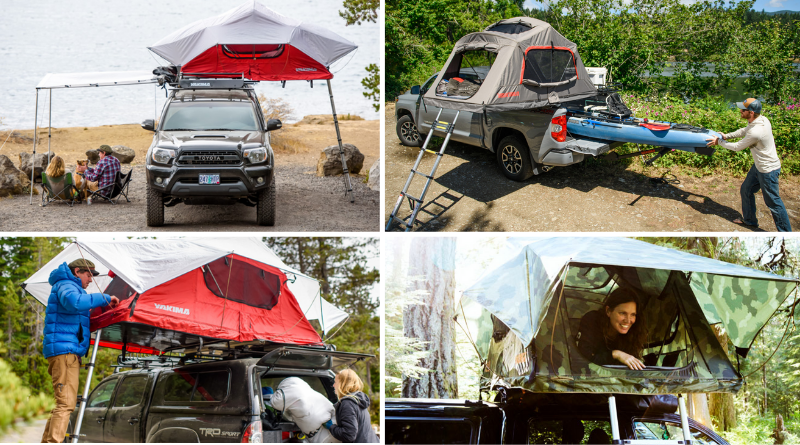
WHY WE LIKE IT: It’s got tons of usable space and the extra large window cutouts keep the surrounding vistas unobstructed. The small SkyRise starts at a reasonable $1,100 and max out at $2,200 for the flagship 600D, 3000MM 3-person HD Medium. We’re digging the limited-edition POLER camo print (pictured bottom right).
Tepui HyBox
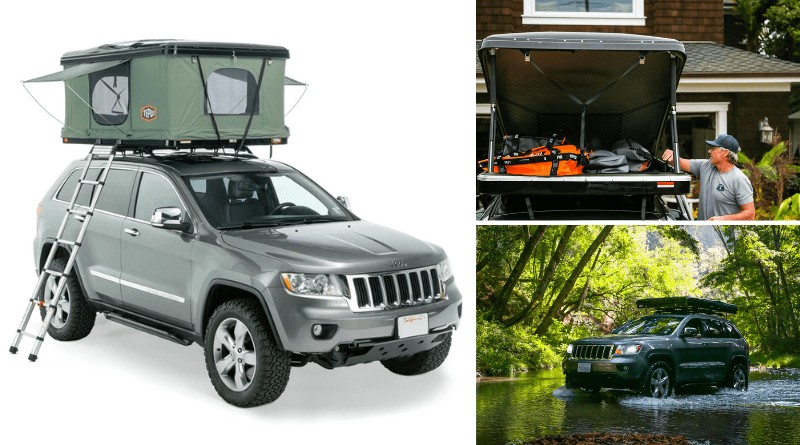
WHY WE LIKE IT: It’s a hard-shell tent AND and cargo box! Pop open the latches on both ends and it transforms into a tent, or open the latches on one side to access 23 cubic ft. of storage.

